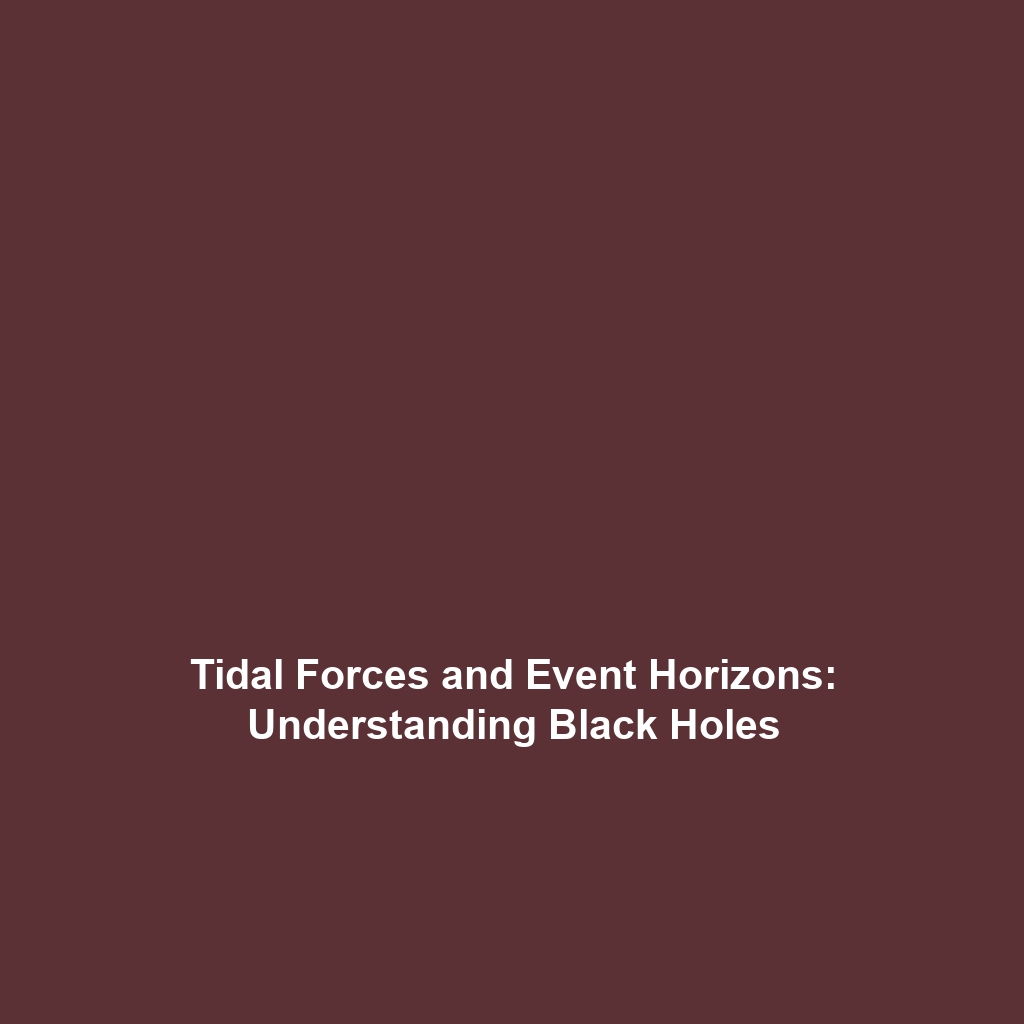How Tidal Forces Increase Near the Event Horizon of Black Holes
Introduction
Tidal forces are a fascinating phenomenon that become increasingly pronounced as one approaches the event horizon of a black hole. These forces, resulting from the intense gravitational gradient near black holes, have significant implications for our understanding of astrophysics and the nature of spacetime. Understanding how tidal forces increase near the event horizon is critical for both theoretical exploration and practical applications in astronomy, as it sheds light on the behavior of matter under extreme gravitational influences.
Key Concepts
The study of tidal forces near the event horizon encompasses several fundamental concepts:
1. Tidal Forces Explained
Tidal forces arise due to the differential gravitational pull experienced by an object in the vicinity of a massive body. In the case of black holes, these forces intensify dramatically as one approaches the event horizon. The concept of tidal stretching and compression is central to understanding this phenomenon.
2. Event Horizon
The event horizon is the boundary surrounding a black hole beyond which no information or matter can escape. As objects approach this boundary, they experience extreme gravitational gradients, leading to pronounced tidal effects.
3. Spaghettification
Spaghettification is a term describing the process wherein objects are stretched and compressed due to the intense gravitational forces near the event horizon. This phenomenon illustrates the dangers faced by matter as it falls into a black hole.
Applications and Real-World Uses
Understanding how tidal forces increase near the event horizon has practical implications, particularly in theoretical physics and astronomy:
- Astrophysics Research: Researchers utilize knowledge of tidal forces to study the dynamics of objects interacting with black holes.
- Gravitational Wave Astronomy: Tidal forces play a critical role in the collision of neutron stars and black holes, influencing the gravitational waves produced during these events.
- Simulation Models: Accurate models of tidal forces are essential for simulating black hole environments, enhancing our understanding of their behavior and surrounding plasma.
Current Challenges
Several challenges persist in studying tidal forces near black holes:
- Observational Limitations: The extreme conditions near black holes make direct observation difficult, necessitating reliance on indirect measurement techniques.
- Theoretical Models: Current models may not fully capture complex phenomena occurring at the event horizon, leading to gaps in understanding.
- Computational Resources: Simulating the effects of tidal forces requires significant computational power and sophisticated algorithms.
Future Research and Innovations
Research into tidal forces and black holes is ongoing, with several promising avenues for future exploration:
- Quantum Gravity: Advancements in theories bridging general relativity and quantum mechanics may provide new insights into tidal forces.
- High-Performance Computing: Next-generation computational technologies will enable more complex simulations of black hole interactions and tidal effects.
- Gravitational Wave Detectors: New detectors will help study collisions involving black holes, enhancing our understanding of tidal influences during these events.
Conclusion
In summary, understanding how tidal forces increase near the event horizon is crucial for advancing our knowledge of black holes and the fundamental laws of physics. Continued exploration in this area presents opportunities for significant scientific breakthroughs. For further reading on related topics, explore our articles on black hole theory and gravitational waves.
